The EV compensation dial on the flash controls the power of the flash light.
The EV compensation on the camera controls the exposure of ambient light.
Too bad Pentax never mention this important point in their user manual. Not surprise to me because Pentax usually do a very bad job in their manual.
The test photos below are not a very good demonstration of the 2 EV compensation, because teddy was also lit by the ambient light as well. But it's good enough to support my conclusion.
Note that the 3rd photo did not have an 2EV under exposured background, because the shutter would be faster than sync speed. The 3rd photo actually under-exposured the background by 1EV. See the data. The fifth photo used HS mode and successfully under-exposured the background by 2EV.
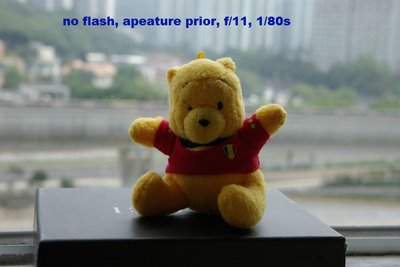
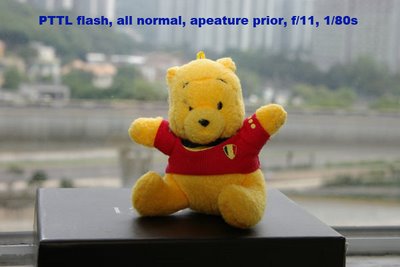
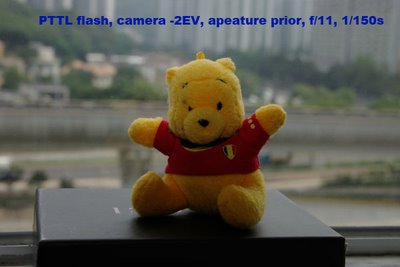
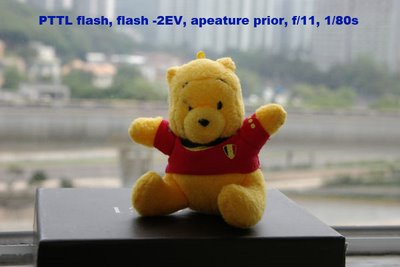
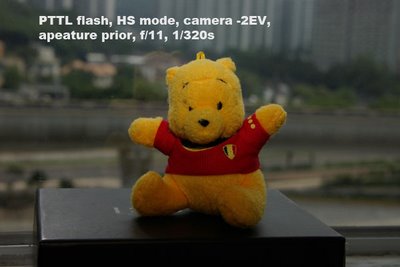
2 comments:
Looking the the photos and the info, I'd say your camera EV compensates both flash as well as ambient light at the same time rather than just the ambient light since the aperture remains at f11 for all photos yet WtP is much darker where your had the camera set to -2EV. If it were just for compensating the ambient light, all f11 photos should give WtP the same brightness except where the flash EV compensation is set otherwise.
Remark that one of the camera -2EV photo only -1EV because of x-sync shutter speed. Also note that the PTTL tends to underexposure.
Another factor affecting the result is the ambient lighting on the bear, which is quite bright indeed.
I still hold-on to my my own conclusion, but I admit that the test does not show a very clear result.
Post a Comment